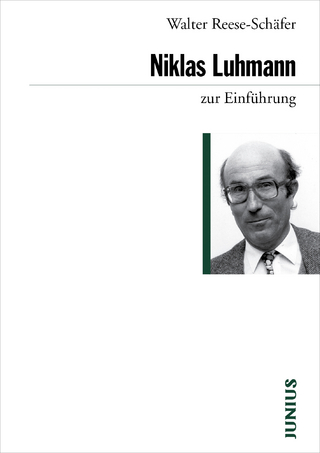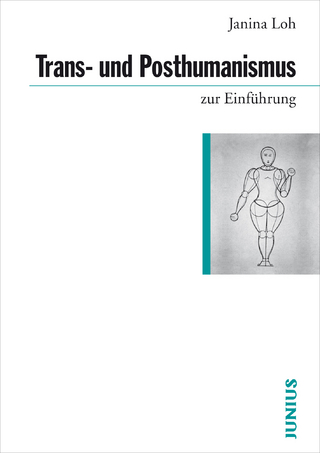
Brain Structure, Learning, And Memory
Routledge (Verlag)
978-0-367-01468-1 (ISBN)
In science, a few areas particularly capture the imagination because of a combination of excitement, substantial technical progress, and implicit significance in affecting the nature and quality of life. Perhaps no area of science exhibits these characteristics more abundantly than that dealing with the brain. Once shrouded in the mystical, studies in modem brain science are dramatically enhancing our understanding of brain function and its impact on learning and memory. It is perhaps the union of pragmatic and mystical aspects that makes this such an exciting arena of science. The Office of Naval Research (ONR) began an intensive effort in 1983 on the topic of the neural basis for learning and memory. This effort was aimed at providing the scientific understanding of how learning takes place. It is the expectation that a neurological understanding of learning processes will lead to the formulation of learning strategies that will significantly enhance performance. This is important in a civilian and military population faced with serious manpower problems requiring a few individuals to be more expert with technologically intensive systems. With these motivations in mind, two of us (EJW and RN) formulated a full-day symposium at the AAAS annual meeting held in New York, May 1984.
Davis, Joel Lance
"Preface -- Acknowledgments -- 1 LEARNING AND THE SINGLE CELL: CELLULAR STRATEGIES FOR INFORMATION STORAGE IN THE NERVOUS SYSTEM / Gregory A. Clark and Robert D. Hawkins -- Habituation and Sensitization of the Gill and Siphon-Withdrawal Reflex -- Classical Conditioning of the Gill and Siphon-Withdrawal Reflex -- Learning and the Single Cell -- 2 RHYTHMIC ACTIVITY, SYNAPTIC CHANGES, AND THE ""HOW AND WHAT"" OF MEMORY STORAGE IN SIMPLE CORTICAL NETWORKS / Gary Lynch and John Larson -- Introduction -- The Long-Term Potentiation Effect -- Activity Patterns and Long- Term Potentiation -- Some Network-Level Considerations -- LTP and Learning in Cortical Networks -- Discussion -- 3 LOCALIZATION OF THE ESSENTIAL MEMORY TRACE CIRCUIT FOR A LEARNED RESPONSE /Richard F. Thompson -- The Problem of Localization -- The Model Biological System Approach -- Cerebellum: The Locus of the Memory Trace? -- Conclusions and Speculations -- 4 KNOWLEDGE ACQUISITION (""LEARNING"") BY THE SOMATOSENSORY CORTEX / B.L. Whitsel and D. G. Kelly --Introduction -- Experimental Bases for a Conceptual Model of Somatosensory Information Processing -- A Conceptual Model of Somatosensory Cortical Information Processing Mathematical Modeling of Neural Network Pattern Formation -- Discussion and Conclusions -- 5 STOCHASTIC MODELS OF NEURAL NETWORKS INVOLVED IN LEARNING AND MEMORY / Muhammad K. Habib and Pranab K. Sen -- Introduction -- Stochastic Models for Subthreshold Neuronal Activities -- Randomly Stopped, Nonstationary Diffusion Processes -- Stochastic Point-Process Models and Applications to Neuronal Plasticity Cross-Correlation Surfaces of Simultaneously Recorded Spike Trains -- Estimation of Cross-Correlation Surfaces and Intensity Processes -- Applications to Multicellular Recordings in Studies of Neuronal Plasticity --6 LOCAL AND GLOBAL FACTORS IN LEARNING / Leon N Cooper -- Networks That Remember -- Networks That Learn -- Summary of Related Visual Cortex Experimental Data -- Modification of Cortical Synapses: Local and Global Variables -- Extension to Networks -- Experimental Test of Changes in Inhibitory Activity Due to Visual Experience -- Possible Candidates for Global Controllers -- 7 COMPONENTS OF EXPERIMENTAL LEARNING / Richard H. Granger, Jr., Jeffrey C. Schlimmer, and Michal Young -- Introduction -- The CEL Framework for Information Storage and Retrieval Contingency and Salience Assignment -- Latency: Learning When to Respond -- Related Work --Conclusions -- 8 NEURAL DYNAMICS OF CATEGORY LEARNING AND RECOGNITION: ATTENTION, MEMORY CONSOLIDATION, AND AMNESIA / Gail A. Carpenter and Stephen Grossberg -- Introduction: Self-Organization of Recognition Categories -- Bottom-Up Adaptive Filtering and Contrast-Enhancement in Short-Term Memory -- Top-Down Template Matching and Stabilization of Code Learning --Attentional Gain Control and Attentional Priming -- Matching: The 2/3 Rule -- Direct Access to Subsets and Supersets -- Weber Law Rule and Associative Decay Rule for Long- Term Memory -- Fast Learning and Slow Learning: The Direct Access Rule -- Stable Choices in Short- Term Memory -- Order of Search and the Subset Recoding Property -- An Example of Code Instability -- Search of Subsets, Supersets, and Mixed Sets -- The Nature of Categorical Invariance During Learning -- Vigilance, Orienting, and Reset -- Distinguishing Signal from Noise in Patterns of Variable Complexity: Weighing the Evidence -- Vigilance Level Tunes Categorical Coarseness: Environmental Feedback -- Universal Recognition Design Across Modalities -- Interdisciplinary Relationship: Word Recognition, Evoked Potentials, and Medial Temporal Amnesia -- APPENDIX- Network Equations -- STM Equations -- LTM Equations -- STM Reset System -- Contributors -- Index.
"
| Erscheinungsdatum | 16.09.2019 |
|---|---|
| Verlagsort | London |
| Sprache | englisch |
| Maße | 152 x 223 mm |
| Gewicht | 743 g |
| Themenwelt | Sozialwissenschaften ► Soziologie |
| ISBN-10 | 0-367-01468-8 / 0367014688 |
| ISBN-13 | 978-0-367-01468-1 / 9780367014681 |
| Zustand | Neuware |
| Haben Sie eine Frage zum Produkt? |
aus dem Bereich


